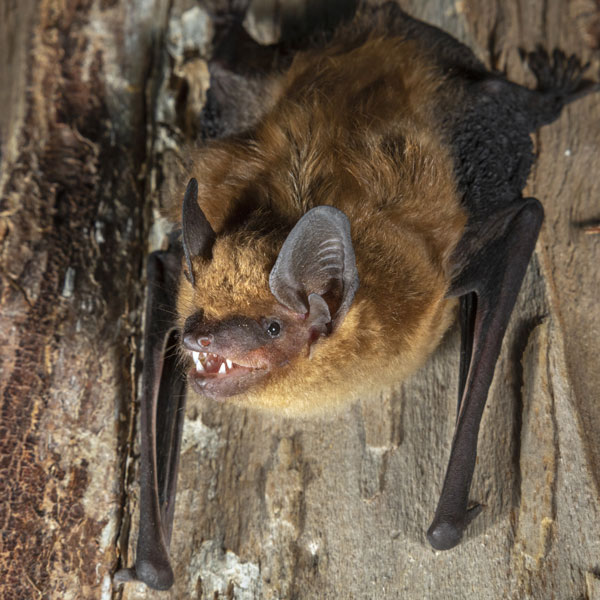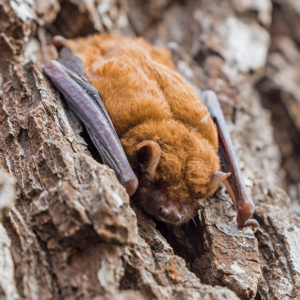Big Brown Bats in Salina
The big brown bat is large relative to most bats and also likely the most common species in the Salina area. Most bats are highly sensitive to environment, but these bats are less so, which is why they’re commonly found in cities and suburban areas. Their preferred food is beetles, using their powerful jaws to chew through the hard exoskeleton. They will also eat moths, flies, wasps, and flying ants. Big brown bat colonies range from 20 to 300 individuals. Big brown bats can live for years in the wild, but most die off during their first winter due to malnutrition.
Big Brown Bat Habitat
Big brown bats can exist in a variety of different climates including meadows, deserts, mountains, forests, suburban areas, and cities. They hibernate in caves, mines, walls, attics, or other buildings. They begin hibernating in small groups around November, often less than 50 miles away from their summer roosts. They reemerge in the springtime.
Big Brown Bat Behaviors, Threats, or Dangers
Big brown bats are nocturnal. During the day, they roost. They are a significant predator of agricultural pests. The main threat presented by big brown bats is the fact that they roost and hibernate in buildings, bringing them in close contact with humans. Big brown bats are carriers of disease and it’s important to exercise extreme caution if you come across one. If you notice a bat has made its way into your building, never approach it or attempt to handle it yourself. Always contact a professional wildlife control company.



